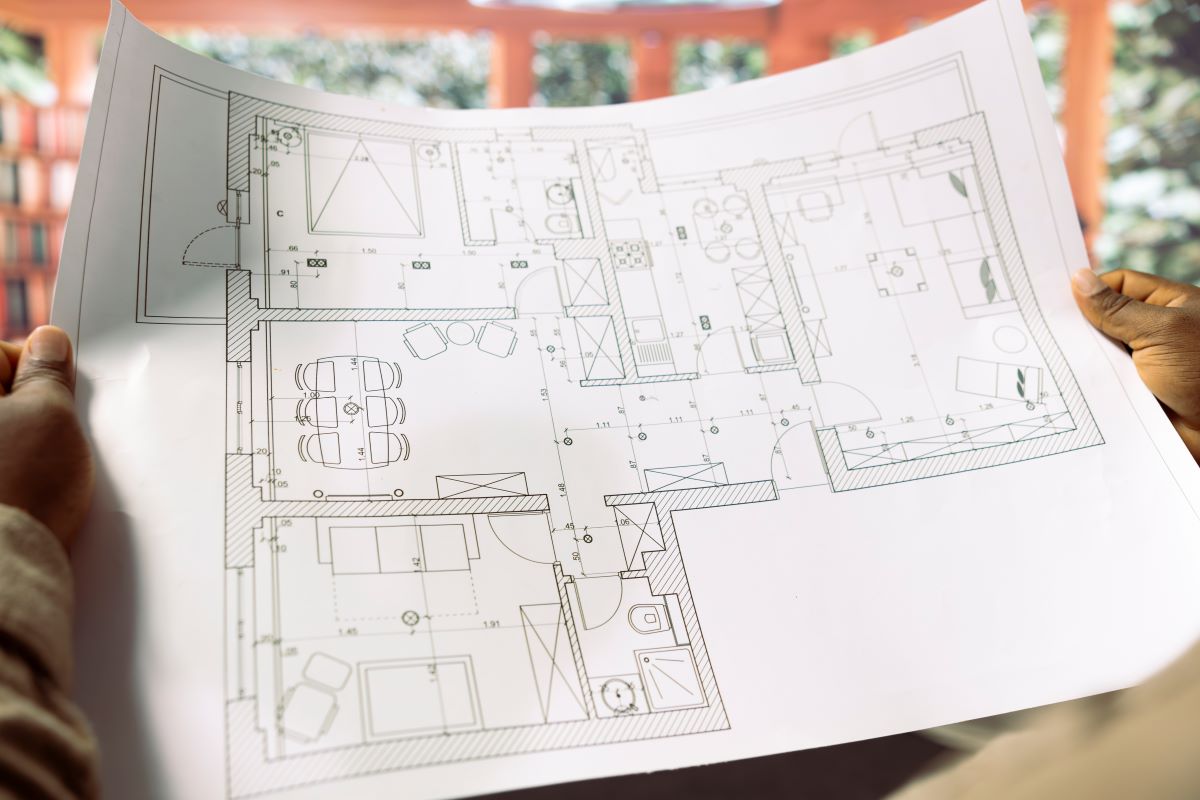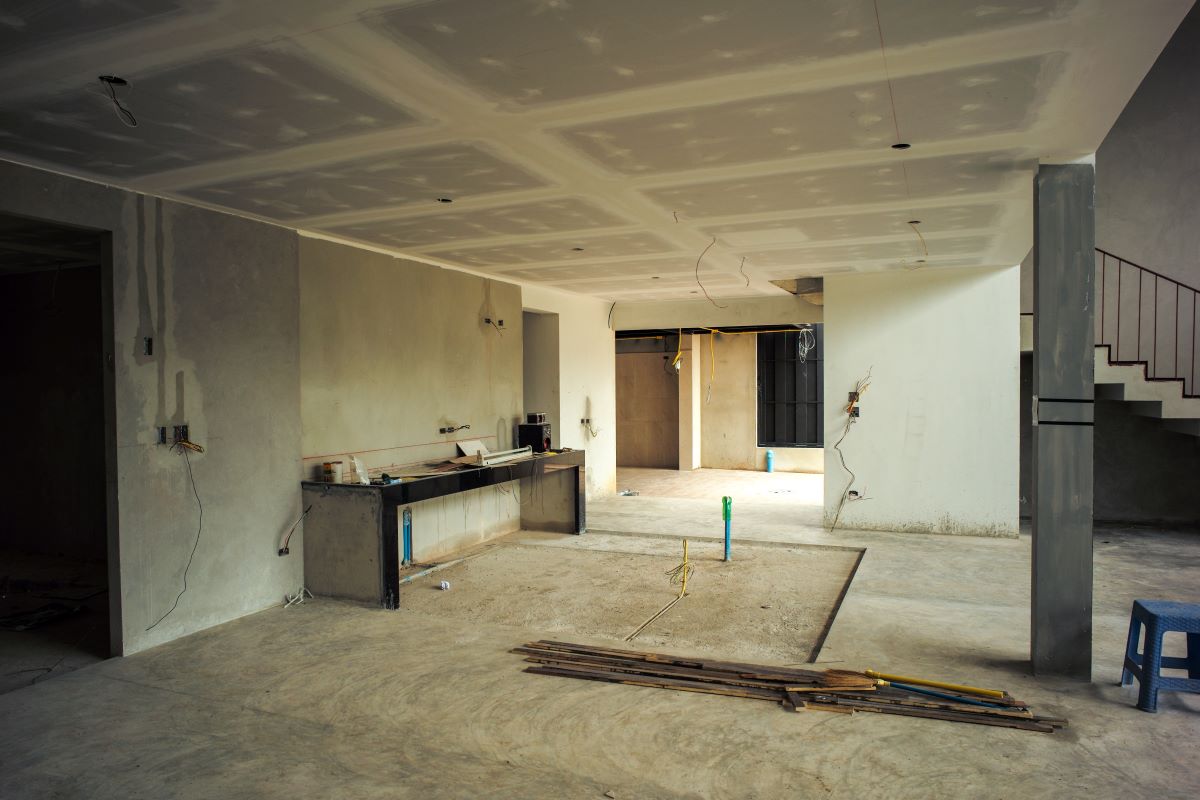Your home is one of your most important investments, and maintaining or upgrading it can enhance your quality of life and property value. But how do you know when it’s time to bring in a professional? Whether you’re planning a full house transformation or simply upgrading your kitchen, hiring a home remodeling contractor is a major decision—and one that requires timing, research, and planning.
In this guide, we’ll explore the most common signs it’s time to call a general contractor for home remodel services, the red flags to avoid when choosing a contractor, and a breakdown of the five essential stages of a renovation. You’ll also learn the right order for tackling your remodel project and discover how to find the best remodeling contractors near you.
 10 Signs You Need to Hire a Home Remodeling Contractor
10 Signs You Need to Hire a Home Remodeling Contractor
If you’re unsure whether it’s time to hire a home remodeling contractor near you, look out for these telltale signs:
Your Home No Longer Meets Your Needs
Whether your family is growing, your lifestyle has changed, or you’re working from home more often, your home should adapt to your needs. A remodel house contractor can help reconfigure your layout or expand your space to match your current lifestyle.
Your Kitchen Feels Outdated or Lacks Functionality
Cramped layouts, worn countertops, and outdated appliances can hold your kitchen back. Kitchen remodeling contractors specialize in transforming kitchens into functional and modern spaces. If you’ve been thinking about kitchen renovations, now may be the time to consult a contractor for kitchen remodel.
DIY Projects Are No Longer Cutting It
Small fixes can be fun weekend projects, but larger remodels require professional skills. If your to-do list keeps growing or your repairs don’t hold up, a general contractor remodeling team can ensure quality and safety.
Your Home Has Structural or Safety Issues
Cracks in the walls, uneven floors, or outdated wiring are not just eyesores—they’re potential hazards. Hiring an interior home remodeling contractor can address these issues before they become costly problems.
Your Home Hasn’t Been Updated in Over a Decade
Design trends and materials evolve. If it’s been more than 10 years since your last update, your home could benefit from a refresh. A home remodeling contractor can modernize everything from flooring to fixtures.
You’re Ready to Sell or Increase Resale Value
Want to attract more buyers or boost your home’s market value? Remodeling is a smart investment. General contractor home remodel professionals know how to make updates that deliver ROI.
Energy Efficiency Is a Concern
Old windows, doors, or HVAC systems can lead to higher energy bills. Remodeling allows you to upgrade to energy-efficient alternatives and reduce your carbon footprint.
You Have the Budget but Not the Time
You’ve saved for this remodel, but your schedule is packed. Trust a remodeling contractor to manage the job efficiently while you stay focused on your daily life.
You’re Experiencing Layout Issues
If your home’s layout is awkward or inefficient, a contractor can redesign the space to make it flow better, improve storage, and increase usability.
You Want a Professional Finish
If you’ve envisioned a Pinterest-worthy home, it’s time to work with someone who can bring your vision to life. A home remodeling contractor has the design expertise and resources to deliver high-end finishes.
 What Are the Red Flags for Contractors?
What Are the Red Flags for Contractors?
Hiring a home remodeling contractor is a big investment, and choosing the wrong one can lead to delays, budget overruns, subpar workmanship, or even legal headaches. Whether you’re hiring a general contractor for a home remodel, kitchen remodeling contractors, or an interior home remodeling contractor, it’s crucial to know the warning signs that may indicate an untrustworthy or unqualified contractor. Here are the major red flags to watch for when searching for the right professional to bring your remodeling vision to life.
No License or Insurance
One of the most serious red flags is a contractor who cannot provide proof of licensing or insurance. Licensed contractors have met state or local requirements and have demonstrated basic competency in their trade. Insurance protects you and your property in the event of accidents, damage, or injury on your job site. A legitimate general contractor remodeling team will gladly provide copies of their license, liability insurance, and workers’ compensation coverage.
If a contractor asks you to pull the permits yourself or claims they “don’t need a license,” walk away immediately.
No Written Contract or Vague Paperwork
Any reputable remodel house contractor will insist on a detailed written contract before beginning work. This contract should outline the scope of the project, materials, timeline, payment terms, and responsibilities. A lack of a written agreement—or one that’s extremely vague—can lead to misunderstandings, cost overruns, or unfinished work.
Watch out for contractors who push you to sign on the spot without reviewing the terms or refuse to provide written documentation altogether.
Demands for Large Upfront Payments
It’s standard for contractors to ask for a deposit before beginning work—typically around 10% to 30% of the total cost. However, if a contractor demands a large upfront payment (like 50% or more), it could indicate financial instability or an intent to take your money without completing the job.
Be especially cautious if the contractor only accepts cash or pressures you to pay immediately without issuing an invoice or receipt.
Unrealistically Low Estimates
We all love a good deal, but if one contractor’s bid is significantly lower than others, it may be too good to be true. Cut-rate pricing often comes with hidden costs, cheap materials, or shortcuts that could compromise the integrity of your remodel. Inexperienced or dishonest contractors may lure you in with a low bid and then hit you with unexpected charges later.
Compare multiple quotes and look for consistent pricing to ensure you’re getting fair market value.
Lack of References or Poor Reviews
Always ask for at least three references from past clients—and follow up with them. A trustworthy home remodeling contractor near you will be happy to showcase their past work and share satisfied customers. Additionally, check online reviews on platforms like Google, Yelp, Houzz, or the Better Business Bureau.
If reviews mention recurring problems like missed deadlines, poor communication, or unfinished work, that’s a red flag.
Poor Communication or Unprofessional Behavior
Your contractor should be responsive, clear, and courteous throughout the planning and construction process. If they frequently miss phone calls, don’t respond to emails, or fail to provide updates, it could spell trouble once the project is underway.
Other red flags include showing up late to appointments, refusing to answer questions directly, or being dismissive of your ideas or concerns. You should feel comfortable and respected by anyone working on your home.
No Permits or Attempts to Skip Inspections
A reliable general contractor home remodel company understands the importance of building codes and permits. If your project requires a permit and your contractor tries to avoid obtaining one, it’s a major warning sign. Skipping permits can lead to fines, unsafe work, and issues with resale or insurance claims in the future.
No Clear Timeline or Schedule
A solid project plan should include an estimated start date, projected completion date, and benchmarks along the way. If a contractor can’t provide a realistic schedule or repeatedly changes the timeline without explanation, that may signal disorganization—or worse, a lack of intention to finish.
 What Are the 5 Stages of Home Renovation?
What Are the 5 Stages of Home Renovation?
Whether you’re updating a single room or completing a whole-house transformation, understanding the stages of a home renovation can help you plan more effectively and minimize stress. A successful remodel doesn’t just happen overnight—it requires a thoughtful approach, coordinated planning, and the expertise of a professional home remodeling contractor. Breaking down the renovation process into five distinct stages can give you clarity and confidence as you move forward.
Here’s a closer look at each stage and what you can expect along the way.
Planning and Design
Every great renovation starts with a solid plan. This initial stage is the foundation for your entire project and sets the tone for everything that follows. During this phase, you’ll define the scope of your remodel—whether it’s a full home makeover, a bathroom upgrade, or a full-scale kitchen renovation. You’ll also establish your goals, budget, and design preferences.
Working with an experienced interior home remodeling contractor or design-build firm can help you refine your vision and avoid costly mistakes. At this point, you’ll discuss:
- The desired layout and functionality
- Style inspiration and material preferences
- Structural changes or additions
- Estimated costs and timelines
Depending on the complexity of the project, you may also need architectural plans, renderings, or even a 3D walkthrough to visualize the final result. Don’t rush this step—it’s your roadmap to a successful renovation.
Pre-Construction and Preparation
Once your design plans are finalized, the next step is preparing your home and securing everything needed to begin construction. This includes obtaining necessary permits, ordering materials, finalizing contracts, and coordinating with your general contractor for home remodel services.
A reputable home remodeling contractor near you will handle much of this for you, ensuring all code requirements and local regulations are met. Key activities during the pre-construction stage include:
- Finalizing the scope of work and construction schedule
- Ordering materials, appliances, cabinetry, and fixtures
- Pulling permits and submitting plans for approval
- Preparing the job site and protecting adjacent areas
- Notifying neighbors (if needed) about the upcoming work
You’ll also begin to coordinate temporary living arrangements if the remodel will disrupt major areas of your home—especially for kitchen renovations or full-house makeovers.
Demolition
Now comes the part that gets messy—but also exciting. The demolition stage involves tearing down the old to make way for the new. Depending on the scale of your renovation, this might involve removing flooring, cabinetry, walls, appliances, and fixtures. In larger projects, it may also include gutting entire rooms or even sections of your home.
A professional remodel house contractor will perform demolition safely and efficiently while managing debris removal and minimizing disruptions to your daily life. This stage typically includes:
- Disconnecting electrical, plumbing, and HVAC systems
- Removing outdated or damaged materials
- Addressing any hidden issues (such as mold, pests, or structural damage) uncovered during the demo
- Cleaning and preparing the space for new construction
Although demolition can be noisy and dusty, it’s a vital step in creating a clean slate for your remodel.
Construction and Build-Out
With demolition complete and the site prepped, your general contractor remodeling team will move into the construction phase. This is when your new space truly begins to take shape.
From rough framing and plumbing to drywall and tile installation, this is typically the longest stage of the process—but also the most rewarding. You’ll finally start to see your vision come to life. This stage usually includes:
- Framing walls and modifying the structure as needed
- Installing HVAC, plumbing, and electrical systems
- Insulating and drywalling
- Painting, flooring, and trim work
- Cabinetry and countertop installation
- Fixture and appliance setup
Throughout this phase, your contractor should keep you informed with progress updates, inspection reports, and schedule adjustments if needed.
Final Touches and Walkthrough
The final stage is all about polishing the details and ensuring the completed work meets your expectations. Also known as the “punch list” phase, this step includes inspecting every aspect of the renovation and addressing any last-minute fixes or finishing touches.
Tasks completed during this stage include:
- Installing hardware, mirrors, lighting, and accessories
- Final paint touch-ups and caulking
- Deep cleaning of the renovated space
- Performing final inspections
- Conducting a final walkthrough with your contractor
A reliable home remodeling contractor will take pride in a job well done and won’t consider the project complete until you’re 100% satisfied.
 In What Order Should You Do a Remodel?
In What Order Should You Do a Remodel?
Remodeling your home requires a strategic order to avoid rework and reduce costs. Here’s the recommended sequence:
Start with the Structure
If your home needs foundation work, roofing, or framing, tackle these structural items first. These are essential for safety and should be done before cosmetic improvements.
Replace or Repair Systems
Address plumbing, HVAC, and electrical work early in the process. This may involve tearing into walls or ceilings, so it’s best handled before finishes are added.
Focus on the Kitchen and Bathrooms
Kitchen renovations and bathroom remodels are next. These spaces boost resale value and require extensive plumbing and electrical work.
Update Living Spaces
Once the “wet” areas are finished, turn your attention to living rooms, dining rooms, and bedrooms. This phase typically includes flooring, paint, and lighting updates.
Exterior and Landscaping
Finally, work on the exterior—siding, paint, roofing, windows, doors, and landscaping. This wraps up the remodel and enhances curb appeal.
Your Guide to Hiring a General Contractor for Home Remodeling
Hiring the right contractor is the foundation of a successful project. Before signing on the dotted line, make sure you’ve read Your Guide to Hiring a General Contractor for Home Remodeling. This essential resource walks you through vetting, interviewing, and hiring a contractor with confidence.
A reliable general contractor home remodel team should:
- Provide clear estimates and realistic timelines
- Be fully licensed and insured
- Have a portfolio of past projects
- Offer references and reviews
- Communicate proactively and professionally
- Manage subcontractors and ensure project coordination
Whether you’re hiring kitchen remodeling contractors or a full-service remodel house contractor, your home deserves the best.
Why Choose DWR Interiors as Your Home Remodeling Contractor?
At DWR Interiors, we understand how important your home is. Our experienced home remodeling contractors bring your vision to life with careful planning, expert craftsmanship, and transparent communication.
As a trusted general contractor remodeling team serving The Woodlands and surrounding areas, we specialize in:
- Kitchen renovations and remodels
- Full interior transformations
- Custom cabinetry and countertops
- Open-concept conversions
- Home office designs
- Bathroom upgrades
- Flooring, tile, lighting, and more
Our licensed and insured contractors deliver stunning results on time and within budget—without the stress.
Let’s Bring Your Vision to Life
If your home is telling you it’s time for a refresh, don’t wait. Partner with DWR Interiors to make your remodeling dreams a reality. Whether you need a contractor for kitchen remodel or a full-scale renovation, our team is here to help every step of the way.
Call us today at 281-419-4144 or contact us online to schedule your consultation.
